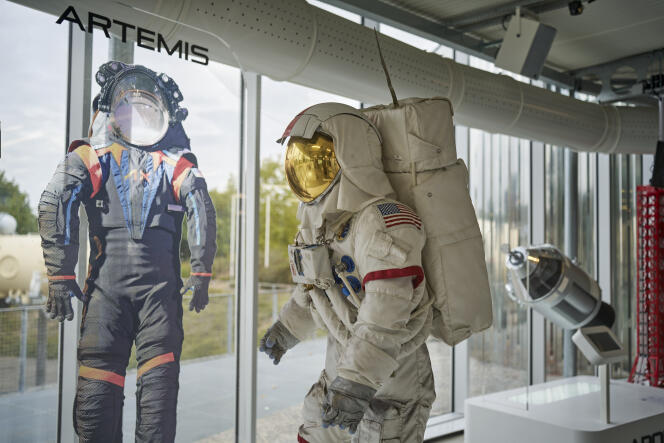You have to overcome the slight apprehension that sets in when you board the immaculate white capsule of the “LuneXplorer” exhibition. In this sanitized vessel, the experience taking place is a first in Europe. The Cité de l’espace, in Toulouse, promises visitors to feel in their bodies the unique sensations of taking off a rocket and landing on the moon. How ? Thanks to a centrifuge supposed to reproduce the acceleration of a space trip, like those used by astronauts for training.
Before embarking on the adventure, four astronauts from the European Space Agency (ESA), including the essential Thomas Pesquet, brief visitors in video and provide their advice for this “mission”. Then, each crew of four visitors enters reproductions of the Orion capsule, the vehicle used in NASA’s program to return humans to the Moon, Artemis.
Belt fastened, the countdown is on and we take off with a crash worthy of Starship, the SpaceX rocket supposed to be used for these future lunar missions. No sensation of spinning in this centrifuge, but rather the surprising sensation of tipping backwards and taking off towards the stars. Through the windows, which hide screens, the sky darkens as the speed increases. The acceleration intensifies to 2 g, the body, which at that moment weighs twice its own weight, flattens to the bottom of its seat. Quickly, it becomes difficult to move and reach out to press the buttons that a voice asks us to touch.
A sensory and interactive journey
The Moon is getting closer and a certain emotion arises at the sight of the craters, so familiar and yet so distant. Once the moon landing is complete, we surprise ourselves by admiring the light of Earth shining in the porthole. The astronauts reappear to explain the sensations felt and share the “mission data” – altitude, speed, duration – which they compare to those of a real trip to the Moon. This is the objective of the Cité de l’espace, to educate visitors through sensory and interactivity: “The experience of takeoff can be told, with words or images, but nothing replaces the physical sensation to understand what astronauts really experience on board a rocket”assures Christophe Chaffardon, director of education, science and culture at the Cité de l’espace.

Also listen The Moon, future human colony?
More than fifty years after humans took their last step on the Moon, during the Apollo-17 mission in 1972, the United States is preparing to return there to install long-term bases. If the announced deadline of 2025 seems to be an increasingly difficult commitment to keep, this new journey should take place in the years to come. And it is with this in mind that the Cité de l’espace wanted to highlight lunar travel, respecting its commitment to always being at the forefront of space news.

The experience is thus accompanied by explanations on the history of Apollo and its current heir, Artemis, with examples of rockets, ships and spacesuits. There is no doubt that the exhibition will evolve alongside future advances in the next great human adventure in space.
“LuneXplorer”, at the Cité de l’espace, in Toulouse. Accessible to adults and children from 1.30 meters tall and to people with reduced mobility. Cite-espace.com
